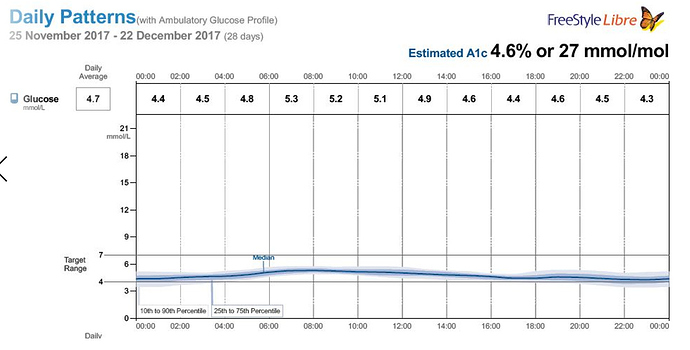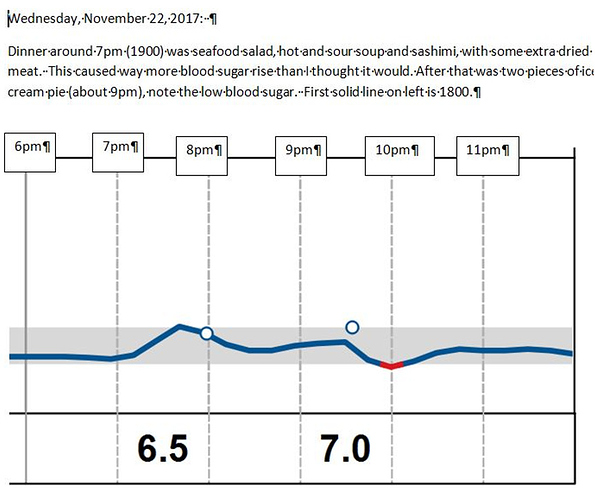I started wearing a CGM – continuous glucose monitor on 6/23/2021. I have learned so much about what effects “my” body. Things I never could have known if I didn’t have one.
Let me go back, in May, I had my yearly physical. When I got my test results, I thought she gave me the wrong results. It said I was prediabetic!!! How could that be I was Ketogenic. Based on those results I was able to get a CGM to monitor my glucose and boy was that eye opening. At that time, I was fasting 18 – 20 hours a day and eating 2 KETO meals in my eating window. Things I was eating everyday were spiking my glucose
- my 4 carb tortillas
- erythritol (I now use Allulose)
- Any fruit (I was just eating berries)
I stopped eating anything that spiked my glucose. I am back to eating breakfast, it is so crazy, if I eat breakfast my glucose will stay level all day, if I fast and eat the same food it reacts differently. Of course, I am eating less than 20 carbs a day and am losing weight and feeling so much better.
I finally got to the point where my glucose never went above 120 for a few weeks. (one amazing thing I learned was hiking does not drop my glucose like a rock like swimming does.) I have been going to my pool in the morning I have been doing laps each morning and my glucose drops to 70. I have amazing energy the rest of the day.
Then last Tuesday I got stung by a wasp, my whole arm swelled up and it was getting hard to breathe. Long story short, I had to go on steroids to stop the poison in my system. I swore I would not go back on steroids but, this was really scary and life threating. I have been on them for 3 days now and I finally am getting my voice back to normal. My glucose soared to 240. It is so amazing to be able to see and understand what the steroids I took for 2 years did to my body, why I have so much atherosclerosis. When you get glucose spikes your liver either puts the glucose into your adipose tissues (fat) or into your arteries. My body splits mine. I am so glad I got the CGM, it is such a fantastic way to get information about my body and its relationship to food that I could never get any other way. I think these will be the future of medicine and weight loss. If any of you have the chance to get one (you need a prescription) get it!!!

 Germaine
Germaine

 Up to now not much unexpected results. Banana gave the absolute worst reaction for me. Didn’t try a cookie yet
Up to now not much unexpected results. Banana gave the absolute worst reaction for me. Didn’t try a cookie yet 
 It is all new to me, but very exciting !
It is all new to me, but very exciting !
